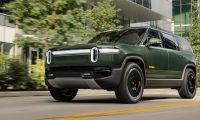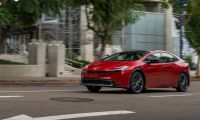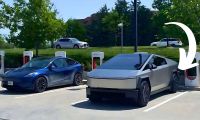It is bothering me because I feel slightly less certain about the accuracy or validity of my findings from last week when I last tested Sport mode. Might Sport mode really provide better combined fuel economy in certain circumstances? Previously, I described some uses of Sport mode as: a way to store extra or reserve power in the battery before going up a steep mountain pass with a heavy load, or if one lives or drives in a place with green zones that may penalize drivers who burn gas while driving within them. I devised a test I figured would be adequate to put the question to rest. Yet, after some friendly debate with another owner via social media, regardless of who is right about the most efficient mode, plug-in hybrids and the Sorento PHEV in particular are convoluted. The “duplicity” of their powertrains confuses people and further testing is warranted. This testing might help people appreciate the capabilities of their PHEVs even more, and might reveal how to get the most efficiency or satisfaction out of this versatile vehicle.
For my next test I took some input from another fellow owner on social media and devised a scenario I can do on my road trip to the absolutely gorgeous Lake Chelan. I am going to cross a 3,000+ foot high mountain pass on my way to the lake. I will use up the full available capacity of my 13.8 kWh battery before I reach the steepest part of the pass, and then put it in Sport mode about 1 mile before I go up the summit of the pass in order to provide maximum power for the ascent and, I anticipate, build up a mile or two of excess range in the battery by the time I reach the summit. I will reset the trip (or “Drive Info”) fuel economy screen before I begin my ascent up the steepest section (a gain of about 1,200 feet in elevation) without any miles of range available in EV mode showing. This will test the fuel efficiency of the vehicle in a situation where the engine will be strained a bit and need to draw on the reserve charge kept in the hybrid battery, but there won’t be much there. I will then go back down to the point where I reset the trip fuel economy, gaining a couple miles of EV range as I coast and regenerate charge down the pass. Then I will repeat the uphill climb in HEV mode to see if the few extra miles of range I added, and the lower RPM the HEV mode should operate at during the 4.5 mile climb, turns out to be more efficient. Note, my almost 10 year old daughter (and it matters that I say “almost” there) along with all our food and gear for a long weekend at the lake are coming along for this ride. While I may not be fully loaded, I’ve got at least 500 pounds of people and stuff in the vehicle.
From a stop on the off ramp, I put my Kia in Sport mode before I begin my ascent up the steepest section of the pass. I figure I should regain at least one more mile of EV range by the time I reach the top and then I will note my fuel economy once I reach the top. I admit it is a very limited test, and it may be flawed as well for any number of reasons, but it seems worthy to me to further our understanding of the different drive modes and their impact on this aspect of performance (i.e. efficiency as performance).
Here are the results of my test: on the first trip up the pass in Sport mode my fuel economy was 14.1 MPG after the 4.5 mile uphill drive. I didn’t drive it hard and stayed under 3,000 RPM the entire way. The only vehicles I passed were slow moving semis that were going 50 MPH or less. The surprising thing was, I didn’t regenerate any miles on this leg of the test. I started with 17% battery remaining (and zero miles of EV range) and ended with 12% battery remaining and still zero miles. Not until I coasted all the way back down to my starting point, still in Sport mode, did I recover any EV range (5 miles in total). This is not what I expected. I figured the gas engine running in Sport mode would regenerate at least some range in the drive battery, but it did not.
On my second trip up the pass in HEV mode with 5 miles of EV range to spare, my fuel economy was only slightly better for the 4.5 mile stretch. I got 15.6 MPG (and still had 4 miles of EV range). So clearly, this test didn’t go quite as I expected. While the HEV mode was more efficient, it was just barely so at about 10% better. I may need to revise this test and try again, or it may just be that going up mountain passes is inherently inefficient when it comes to vehicles. The latter seems a certainty.
I could simply have saved a few miles of EV range without switching to Sport mode, since I knew I was going over this pass. Yet, if I were on a days long drive across the country, and had multiple steep hills and passes to cross and no time or place to stop and recharge my hybrid battery, using the Sport mode to add extra charge for the steepest climbs might be important, depending on load and circumstances.
Still, I need another, better test and I think I have one in mind. Stay tuned for my next Sport mode test and leave your questions and comments below.
Image courtesy of Justin Hart
Justin Hart has owned and driven electric vehicles for over 14 years, including a first generation Nissan LEAF, second generation Chevy Volt, Tesla Model 3, an electric bicycle and most recently a Kia Sorento PHEV. He is also an avid SUP rider, poet, photographer and wine lover. He enjoys taking long EV and PHEV road trips to beautiful and serene places with the people he loves. Follow Justin on Twitter for daily KIA EV news coverage.












